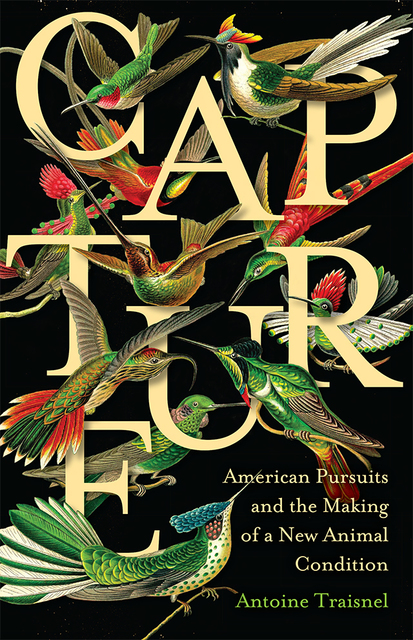Capture
American Pursuits and the Making of a New Animal Condition
From Audubon’s still-life watercolors to Muybridge’s trip-wire locomotion studies, from Melville’s epic chases to Poe’s detective hunts, the nineteenth century witnessed a surge of artistic, literary, and scientific treatments that sought to “capture” the truth of animals at the historical moment when animals were receding from everyday view. In Capture, Antoine Traisnel reveals how the drive to contain and record disappearing animals was a central feature and organizing pursuit of the nineteenth-century U.S. cultural canon.
Capture offers a critical genealogy of the dominant representation of animals as elusive, precarious, and endangered that came to circulate widely in the nineteenth century. Traisnel argues that “capture” is deeply continuous with the projects of white settler colonialism and the biocapitalist management of nonhuman and human populations, demonstrating that the desire to capture animals in representation responded to and normalized the systemic disappearance of animals effected by unprecedented changes in the land, the rise of mass slaughter, and the new awareness of species extinction. Tracking the prototyping of biopolitical governance and capitalist modes of control, Traisnel theorizes capture as a regime of vision by which animals came to be seen, over the course of the nineteenth century, as at once unknowable and yet understood in advance—a frame by which we continue to encounter animals today.
Eadweard Muybridge, The Horse in Motion (1878)

Table of Contents
Metadata
- rightsThis book is freely available in an open access edition thanks to TOME (Toward an Open Monograph Ecosystem)—a collaboration of the Association of American Universities, the Association of University Presses, and the Association of Research Libraries—and the generous support of the University of Michigan’s College of Literature, Science, and the Arts and the Provost Office. Learn more at the TOME website, available at: openmonographs.org.
The University of Minnesota Press gratefully acknowledges financial support from the University of Michigan to contribute to the publication of this book.
Portions of chapter 1 are adapted from “Huntology: Ontological Pursuits and Still Lives,” Diacritics 40, no. 2 (2012): 4–25; copyright 2013 Cornell University. A portion of chapter 2 was previously published as “American Entrapments: Taxonomic Capture in James Fenimore Cooper’s The Prairie,” Novel: A Forum on Fiction 49, no. 1 (2016): 26–48; copyright Duke University. Portions of chapter 4 are adapted from “Le faune et la sirène: la situation de Cuvier dans l’économie de The Marble Faun, de Nathaniel Hawthorne,” Transatlantica 2 (2011); online since June 5, 2012; http://journals.openedition.org/transatlantica/5563.
Copyright 2020 by Antoine Traisnel
Capture: American Pursuits and the Making of a New Animal Condition is licensed under a Creative Commons Attribution-NonCommercial-NoDerivatives 4.0 International License (CC BY-NC-ND 4.0): https://creativecommons.org/licenses/by-nc-nd/4.0/.
- isbn978-1-4529-6597-0
- publisherUniversity of Minnesota Press
- publisher placeMinneapolis, MN
- restrictionsPlease see the Creative Commons website for details about the restrictions associated with the CC BY-NC-ND 4.0 license.
- rights holderAntoine Traisnel
- doi


